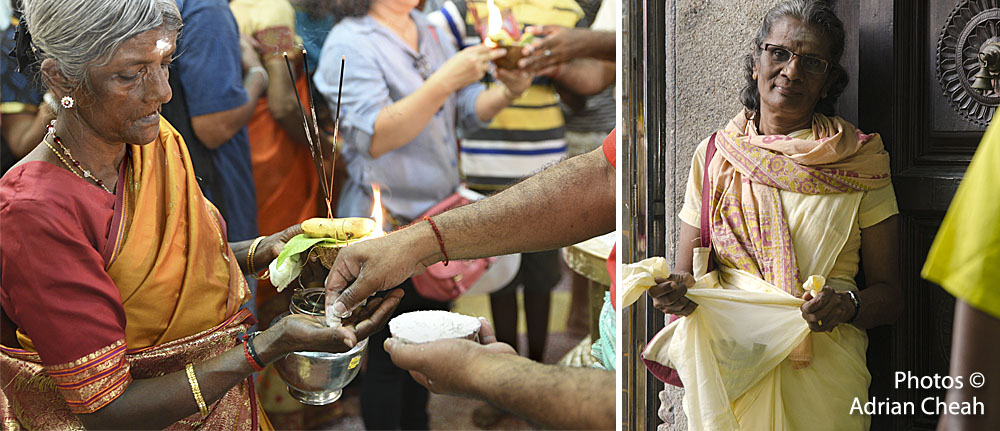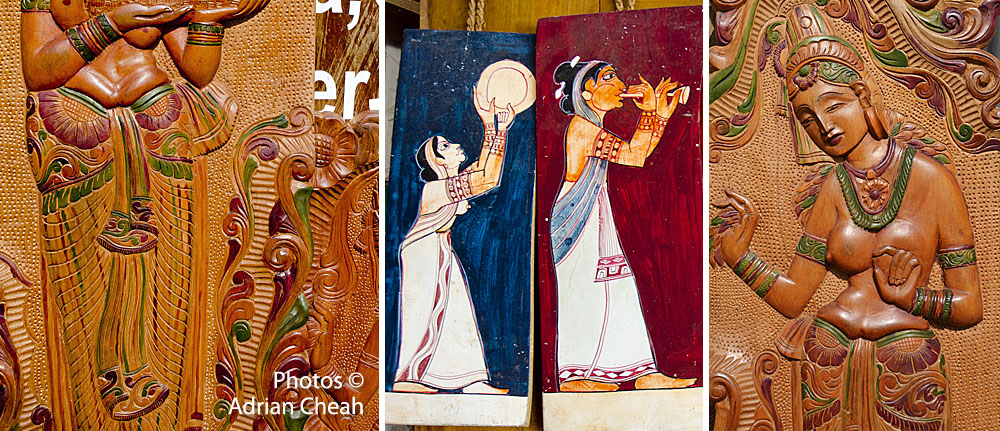The Sari: Queen of garments

The amazingly versatile sari (or saree) transcends mere fabric – it embodies the rich heritage of traditional South Asia women (and a few men) in countries such as India, Pakistan, Bangladesh, Sri Lanka and Nepal. It is also a garment that covers all, yet is revealing, enchanting yet unassuming, serene yet sensuous. The sari, with its six yards or more of artistry, is a masterpiece of contradictions, seamlessly transitioning from workwear to leisure attire to a symbol of opulence, all within its elegant drapes.
The word “sari” is believed to be derived from a Sanskrit word meaning “strip of cloth”. This ancient garment stands as one of the earliest examples of unstitched attire globally, with its origins dating back to the Rig Veda, a text that harks back to 3,000 B.C. Despite its ancient lineage, the sands of time have failed to diminish its enduring allure. Even in the modern age, women continue to buy saris with great enthusiasm, especially during festivals and wedding seasons.


While most traditional costumes like the Chinese hanfu, Japanese kimono and Korean hanbok have today essentially become ceremonial wear, the sari remains a practical and cherished choice for contemporary Indian women across the globe in their everyday lives. That in a nutshell is its greatest triumph!


For those in search of beautiful saris in Penang, a visit to Little India in the heart of George Town is a must. You will be spoilt for choices as there are plenty on offer. The bustling streets are lined with rows of shops where textile merchants showcase imported saris from almost every part of India. Depending on your budget and preferences, the range of materials and quality on offer can vary significantly. You might come across a one-of-a-kind pure handloom gold brocade silk sari adorned with intricate hand embroidery and a luxurious pallu (veil), priced at RM5,500. On the other hand, a printed chiffon sari could be as affordable as RM80.

According to the Guinness World Book of Records, the most expensive silk sari was sold sold commanded a whopping price of Rs. 3,931,627 (RM 23,603; USD 47,278)) on 5 January 2008. This extraordinary creation was crafted by Chennai Silks in India and featured reproductions of 11 iconic paintings by the celebrated Indian artist Raja Ravi Varma. Among these, the centerpiece depicted Varma's renowned "Galaxy of Musicians." The making of this sari was a testament to craftsmanship, demanding a staggering 4,760 man-hours to complete.
Essentially, the swaths of fabric are pleated, fastened and wrapped around the body in a variety of ways. However, one common factor remains – all should be done without a single stitch! If you are in search of guidance on how to don a sari, the internet has tutorial videos to assist you in mastering the art of sari draping.
The sari ensemble includes a choli (cropped top, with or without sleeves) and a slender petticoat. The petticoat serves the essential role of anchoring the numerous layers of fabric and facilitating the intricate textile manipulation that defines the art of sari draping. In Penang, women often prefer to arrange the box pleats in the front, allowing for greater ease of movement. The draping typically culminates with the pallu, or veil, draped over either the left or right shoulder, with the pallu frequently pleated and pinned onto the blouse for convenience. In some instances women may wear the box pleats at the back or even at the side, while others would wrap the fabric around the body without pleats. It is interesting to note that in India, each region has a unique sari draping style, keeping in sync with the needs of the women there. Some draping styles require more fabric and can measure up to nine yards in length. This rich diversity exemplifies India's vibrant sari tradition, celebrating the beauty of individuality and uniqueness, and this tradition is proudly embraced by the Indian community around the globe.

During my visit to Sri Lanka, I bought a lovely piece of pink sari material for my wife. It was elaborately embellished with sequins and embroidery. To make it more convenient for her, I suggested a visit to a skilled tailor in Little India to transform the fabric into a ready-to-wear sari. This is to eliminate the intricacies of tying a sari, not to mention the embarrassment should it unravel in public especially at a formal function. She was thrilled with the hassle-free version, complete with zips, hooks and buttons. All she had to do was slip it on and zip it up!
I have always been captivated by the featherweight nature of the material, with its vibrant colours and intricate patterns. At one point, I even took my tailor to Little India, exploring the possibility of fashioning a shirt from the sari material. In the shop, endless shelves piled with neatly folded, colourful saris were on display. However, as beautiful as they were, my tailor cautioned that the material is only "strong" when it is in one piece, uncut. It will fray easily when cut, even if the layers were doubled up. He further explained that the soft and slippery nature of the material is difficult to manage when sewing. Eventually, we left the shop empty handed.

The dazzling array of the sari material available is mind-boggling. In Penang, many of these materials are commonly imported from India. The sari is so deeply intertwined with the life and traditions of the Indian people that each region in India has nurtured its own unique weaving techniques and styles.

India, a veritable powerhouse in dyeing, printing, and weaving, produces sari materials of unparalleled beauty, renowned and exported worldwide. Be it a shimmering Kanchipuram silk sari (also known as kanjivaram silk sarees) woven from pure mulberry silk or a luxurious one with Banarasi brocades, these fabrics are indeed wearable works of art. Interestingly, the Baluchari saris from West Bengal incorporate motifs from the mythological stories of Ramayana and the Mahabharata. You could also opt for a soft Venkatagiri cotton sari with popular Jamdani-style weaving patterns, a hand-crafted Chikan embroidered piece from Lucknow or an intricate one with zari zardozi embroidery on jamevar from Delhi... the list goes on and on.


Indeed, these sari masterpieces serve as symbols of national pride and are revered in each of India's 29 states. Each is a unique expression of the skills needed in the dyeing process as well as the weaving techniques, traditionally handed down through generations. Even today, the art of sari-making continues to be produced by some on traditional handlooms (via revival initiatives) while big players have deployed fully-automated powerlooms in industrial milling plants.

Although the sari comes in every shade of the rainbow, certain dominant colours reflect the occasion it is worn. The vibrant red tones are for joyous celebrations, especially at weddings. For the ravishing bride, the sari is always a bright red. Glittering gold and hues of sun-kissed yellow are also auspicious colours often worn at festive occasions and celebratory events. On the other hand, white marks the state of mourning, worn solemnly at wakes and funerals. The least auspicious colour is black, a taboo should a guest attend a wedding adorned in one, regardless if it is embellished with gold motifs. The inclusion of black saris in a bride's trousseau used to be frowned upon as well. Having said that, the younger generation is obsessed with black. To them, a black sari is like the "little black dress". Although seldom in plain jet black, these saris are often gilded in gold trimmings or embellished with sequins or colourful embroidery.


Residing in a diverse and multicultural society like Penang, it is not uncommon to see an Indian lady attending a Chinese New Year do in a cheongsam or a Chinese girl in a sari at a Deepavali dinner. Here, the sari transcends borders and is embraced by individuals from various nationalities and belief systems. The practice cuts across cultures and is celebrated by all, with a clear understanding that donning a sari does not make you an Indian.

As historians tell us, the earliest sari was little more than diaphanous drapes worn without blouses or petticoats. Through its evolution down the corridors of millennia, a fresh layer was added to this basic drape, starting from the choli and petticoat to the meticulous pleating invented in the mid-nineteenth century to suit Victorian prudery. The sari has always re-invented itself, reigning victorious in the wardrobe battles of the Indian women.
Long live the sari – the Queen of garments!
---------------------------------------------------------
Written by and photographed by Adrian Cheah
© All rights reserved
Updated 5 November 2023